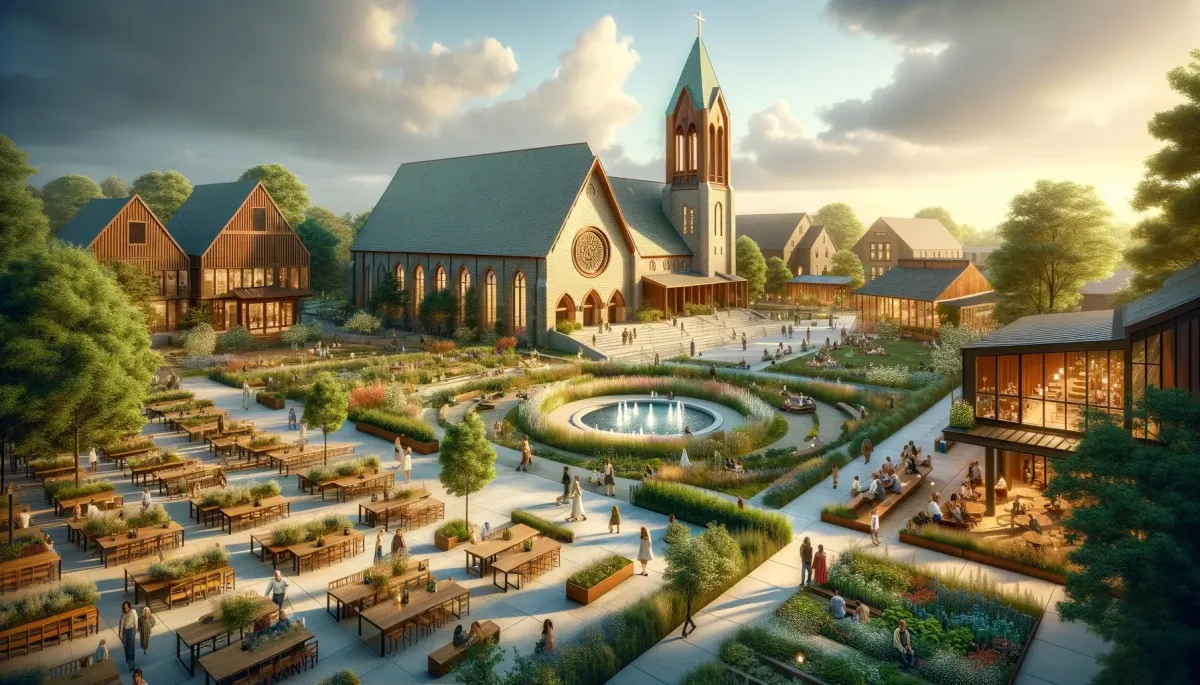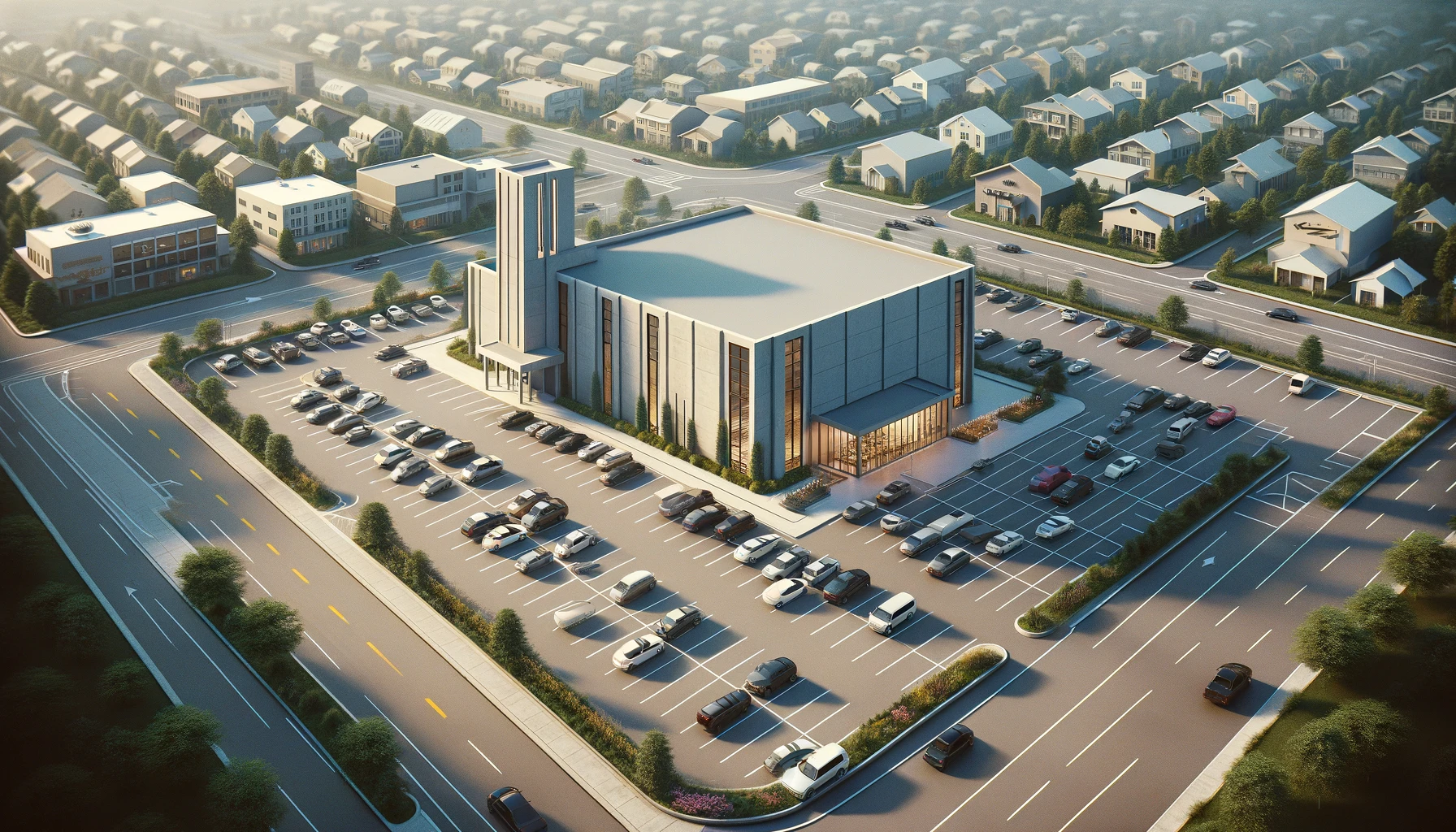Latest Blogs, Updates and Thoughts
Check out my latest messages, Redemption Church plant updates, studies and articles


Our Ugly Churches Are Failing Us and We Need to (and We Can!) Change That.
Our Ugly Churches Are Failing Us and We Need to (and We Can!) Change That.
Let's face it: too many of our churches are eyesores, and it's time we own up to this uncomfortable truth.
In our well-meaning but misguided efforts to be efficient, practical and good stewards, we've lost something important—the intrinsic connection between beauty, worship, and possibly most impactfully, community. The stark, uninspiring “post-modern” buildings we've erected in the name of efficiency stand as testimonies to a forgotten principle we once knew: that the spaces we dedicate to God should lift the human spirit, not depress it.

Example of how our churches currently look and fit into towns.
How can we expect to draw people into a relationship with God when the very gateways to such communion are, frankly, uninviting? It's time to challenge the status quo from the evangelical church and reclaim the lost art of creating churches that mirror the beauty of the Creator they're meant to honor.
The Bible teaches us that every detail of the Tabernacle, every instruction for the Temple, was imbued with significance and beauty, and it clearly reflected the majesty of God. Yet, somewhere along the line, we've rationalized our way into believing that beauty is a luxury we can do without in our places of worship.
We don’t need churches to have tall steeples or Mary in stained glass windows everywhere. That isn’t what makes something beautiful. We DO need churches to become a “third place”. Our churches, by design, should be the ultimate third places—locations where people can gather, not just for worship but for connection, support, and shared life. Yet, when our churches resemble nothing more than bland, functional buildings, we miss a critical opportunity to draw people into a deeper engagement with their faith and with each other.
The "third place," is a term introduced by sociologist Ray Oldenburg.These are spaces distinct from our homes (the 'first' place) and workplaces (the 'second' place) where people voluntarily gather, socialize, and build bonds. In his work, Oldenburg highlights that third places are essential for a vibrant community life, offering informal gathering spots that are accessible, neutral, and foster a sense of commonality among its patrons.
When churches step into the role of a third place, they become more than just a site for Sunday services; they transform into a community hub where life is shared. This transformation has serious implications.

Example of how a church might create a third place and what it would look like
Churches as third places can significantly enhance their social capital, providing a platform for diverse interactions and the strengthening of communal bonds. Data from urban studies indicate that communities with strong social capital have lower crime rates, better educational outcomes, and improved mental health.
Secondly, the role of third places in improving mental health and wellbeing is well-documented. They provide a sense of belonging and support networks that are crucial for mental health. Churches as third places offer additional layers of support through pastoral care, prayer groups, and other spiritual resources, addressing both the social and spiritual needs of individuals.
By becoming a hub for arts, culture, and education, churches can lead a cultural and spiritual renaissance within their communities. This can involve hosting concerts, art exhibits, lectures, and workshops that are open to the wider community, making the church a beacon of cultural enrichment and spiritual growth.
Incorporating the concept of third places into church planning and architecture requires a paradigm shift. It means designing spaces that are open, flexible, and welcoming to all, with amenities that encourage lingering and interaction—coffee shops, bookstores, open courtyards, and community gardens. Not massive, empty, asphalt oceans. It's about creating an environment where relationships can flourish outside formal worship services.
Moreover, adopting this approach doesn't mean abandoning the sacredness of the church; it means enhancing it. When people feel a strong connection to their church as a community hub, their engagement and commitment to their faith and congregation deepen. This holistic approach to church planning, grounded in a deep understanding of human needs, can lead to thriving communities where the church stands at the heart of everyday life, not as an island of spirituality disconnected from the world.
Transforming our churches into third places is not just about architectural beauty or functional space planning; it's a strategic, mission-driven endeavor. It's about reimagining the role of the church in the 21st century as a center of community life, where faith, culture, and social interaction intersect. By doing so, we can fulfill our calling to be a light to the world, drawing people not just to our services, but into a living community of faith.
JOIN THE NEWS LIST!
Copyright © 2024 by William Hamilton
will@thrivetampa.com
(785) 217-5067
